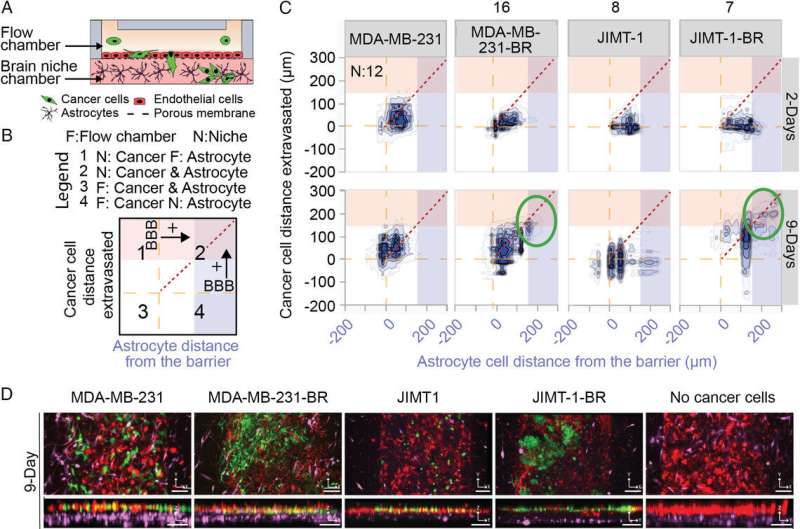This article has been reviewed according to Science X's editorial process and policies. Editors have highlighted the following attributes while ensuring the content's credibility:
fact-checked
trusted source
proofread
New study offers clues into how cancer spreads to the brain

When cancer spreads to the brain, treatment options fall off. Most of the drugs designed to target metastases do not cross the blood-brain barrier or are ineffective at treating brain metastases.
"Understanding how cancer cells thrive or fail in the brain niche could help us develop new treatments targeting these molecular processes," said Sofia Merajver, M.D., Ph.D., the Greater Good Breast Cancer Research Professor at the University of Michigan Rogel Cancer Center.
To understand the molecular processes that influence how cancer cells pass through the blood-brain barrier, Merajver and colleagues used two microfluidic chips that mapped cancer cell migration to the brain and looked at what was happening in the blood-brain niche. Results are published in the journal Advanced NanoBiomed Research.
Using breast cancer cell lines, they found that Dkk-1, a cytokine released by the astrocytes, triggers the cancer cells to migrate. Dkk-1 is known to play a role in in Wnt signaling, a key signaling pathway linked to cancer progression.
"Crosstalk between brain niche cells and cancer cells allows invading cancer cells to permeate the blood-brain barrier. Reducing Dkk-1 levels near invading tumor cells might disrupt this crosstalk and prevent brain metastases," said corresponding author Christopher R. Oliver, Ph.D., a post-doctoral fellow in the Merajver Lab.
More information: Trisha M. Westerhof et al, Blood–Brain Barrier Remodeling in an Organ‐on‐a‐Chip Device Showing Dkk1 to be a Regulator of Early Metastasis, Advanced NanoBiomed Research (2023). DOI: 10.1002/anbr.202200036
Provided by University of Michigan





















